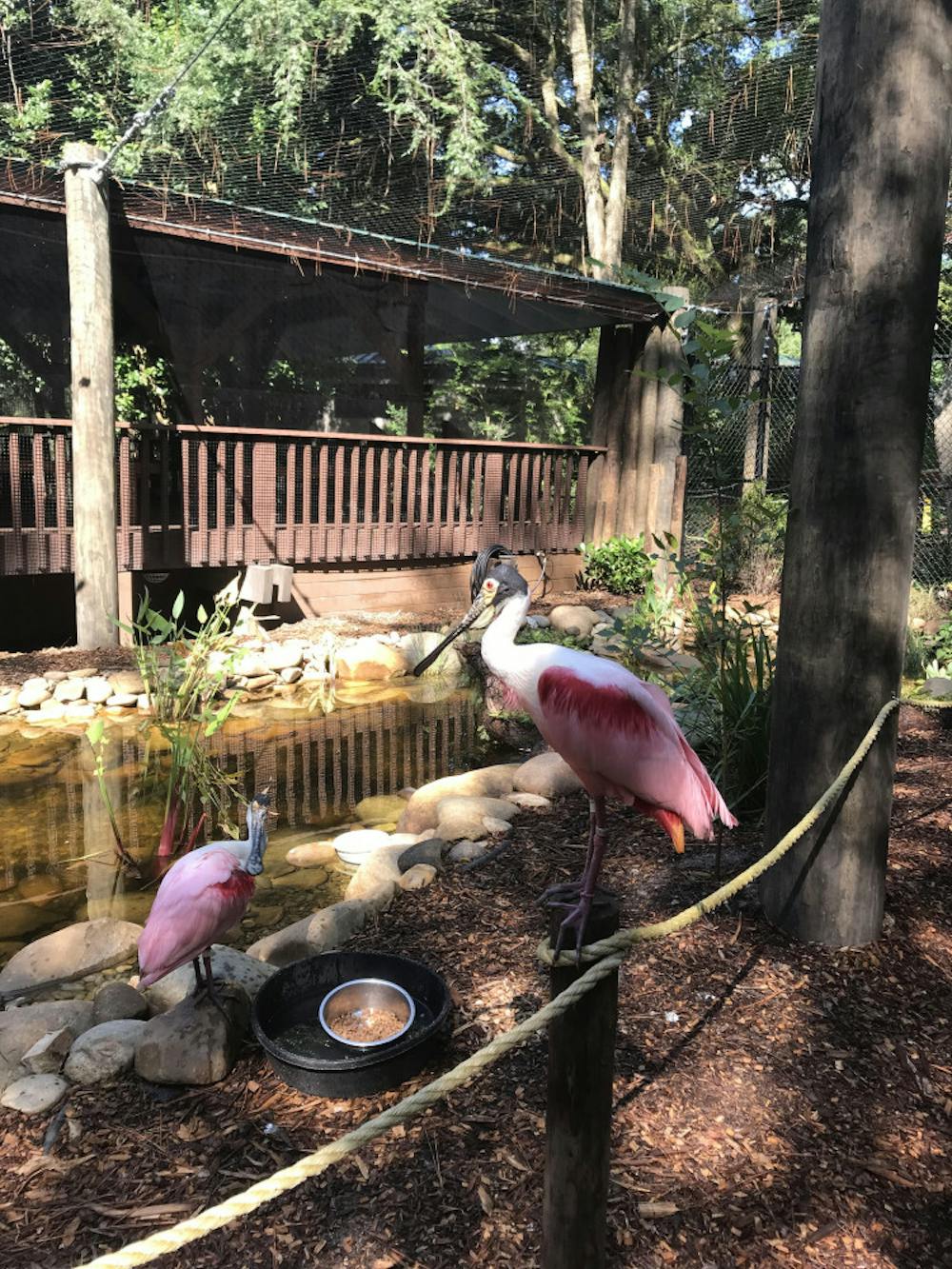The Santa Fe College Teaching Zoo opened its first walk-through aviary Sunday. Visitors are able to enter the animals’ habitat and get close to native Floridian birds.
“We have a lot of exciting exhibits and interesting animals here,” said Anna Meyer, a student zoo keeper. “But this lets our patrons get a lot closer to our animals and see them without the wire in front of them.”
This project began about six months ago and was made possible by a $125,000 grant from the City of Gainesville. Due to the rain, the aviary took longer than expected to finish.
“But as it finally started to come together, it was so satisfying to see the pond be a pond and not a mud hole in the ground,” Meyer said.
There were signs leading to the new area, but some people still had trouble finding it.
“I couldn't find it at first. I thought it was going to be a bigger exhibit,” said Darius Rodriguez, a zoo visitor.
The visitors can watch the birds from two areas: inside the aviary or beneath a covered pavilion. The pavilion was once used to view the alligator exhibit, but the alligators were moved next to the aviary to make room for the new bird sanctuary.
The aviary houses birds like roseate spoonbills, whistling ducks, wood ducks, white ibises, a blue-winged teal and a cattle egret, said Jessica Shimskie, another student zoo keeper.
“All of these animals can be found in Florida,” Shimskie said. “Hopefully it'll help people be concerned about what's in their own backyard, too.”
The birds came from Dallas, San Antonio, St. Louis and the Smithsonian’s National Zoo in Washington, D.C.
The roseate spoonbills’ bright pink color caught the most attention from visitors. The birds made their presence known by standing on logs along the walkway, closest to the families.
“The pink birds really seem to not care if you're there,” Rodriguez said. “They just walk around right past you or clean themselves a foot from you, so that's kinda neat.”
Most of the other birds were tucked away beneath the trees or sitting on the higher branches.
“Some of the other birds are still getting used to people,” Rodriguez said.
The zoo also has a guest experience keeper who will be in charge of watching the birds and the guests in the aviary while the zoo is open.
Zoo staff members will take over maintaining the exhibit. The food costs and exhibit maintenance come out of the zoo’s budget.
The zoo staff come in every morning to clean the aviary, feed the birds and make sure they’re okay, Meyer said.
While working on the aviary, the zoo staff had a goal of improving on the exhibits, she said.
“We want our animals to have the best home,” Meyer said. “If we can do something like this instead of putting a bird into a smaller enclosure, it's better for the birds, and it's better for the guests.”
This exhibit will be open as long as the zoo remains open.
“We hope this lasts forever,” she said. “This isn't a limited time: This is a new permanent exhibit.”
Two roseate spoonbills sunbathe along the walkway of their new home.






